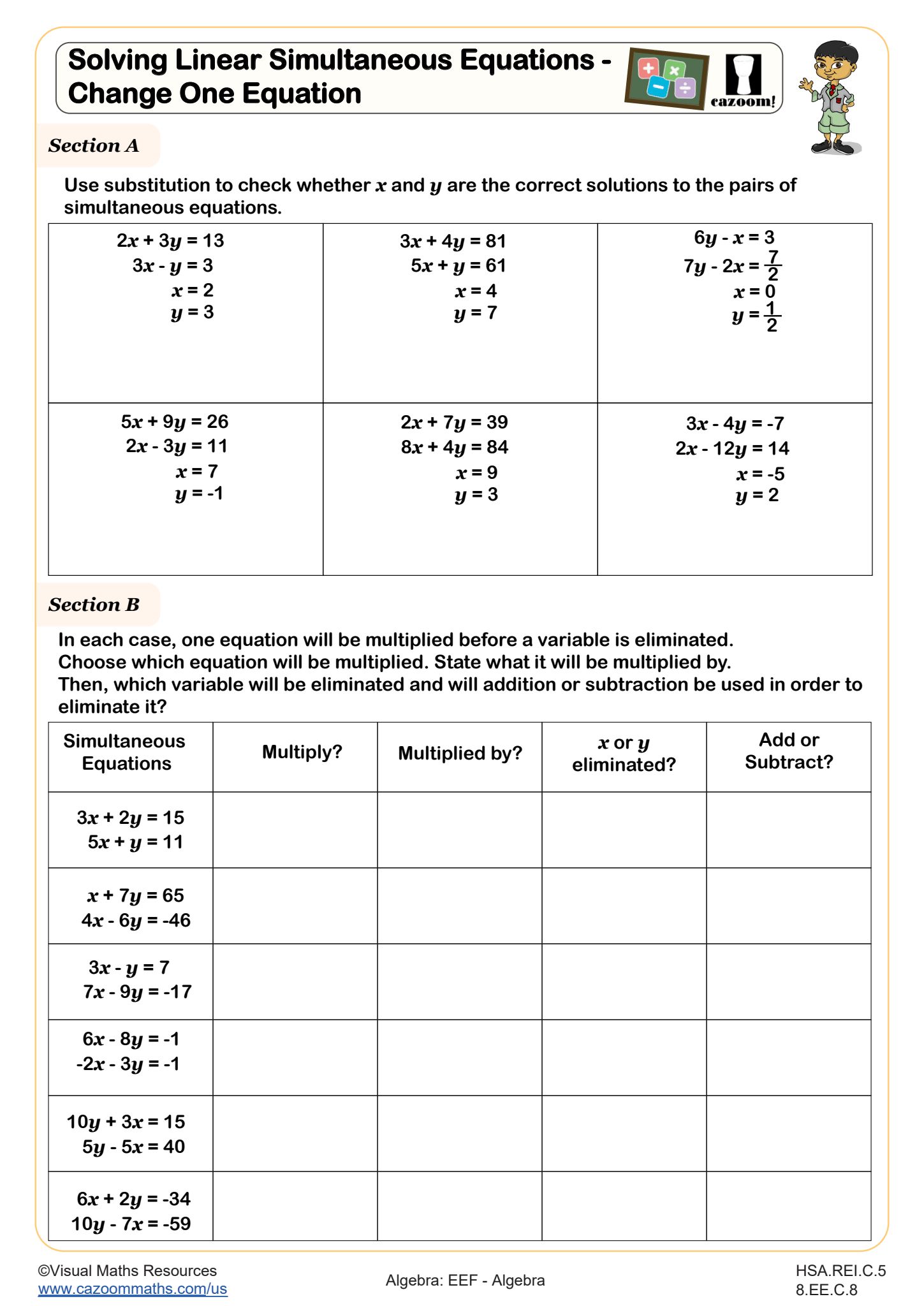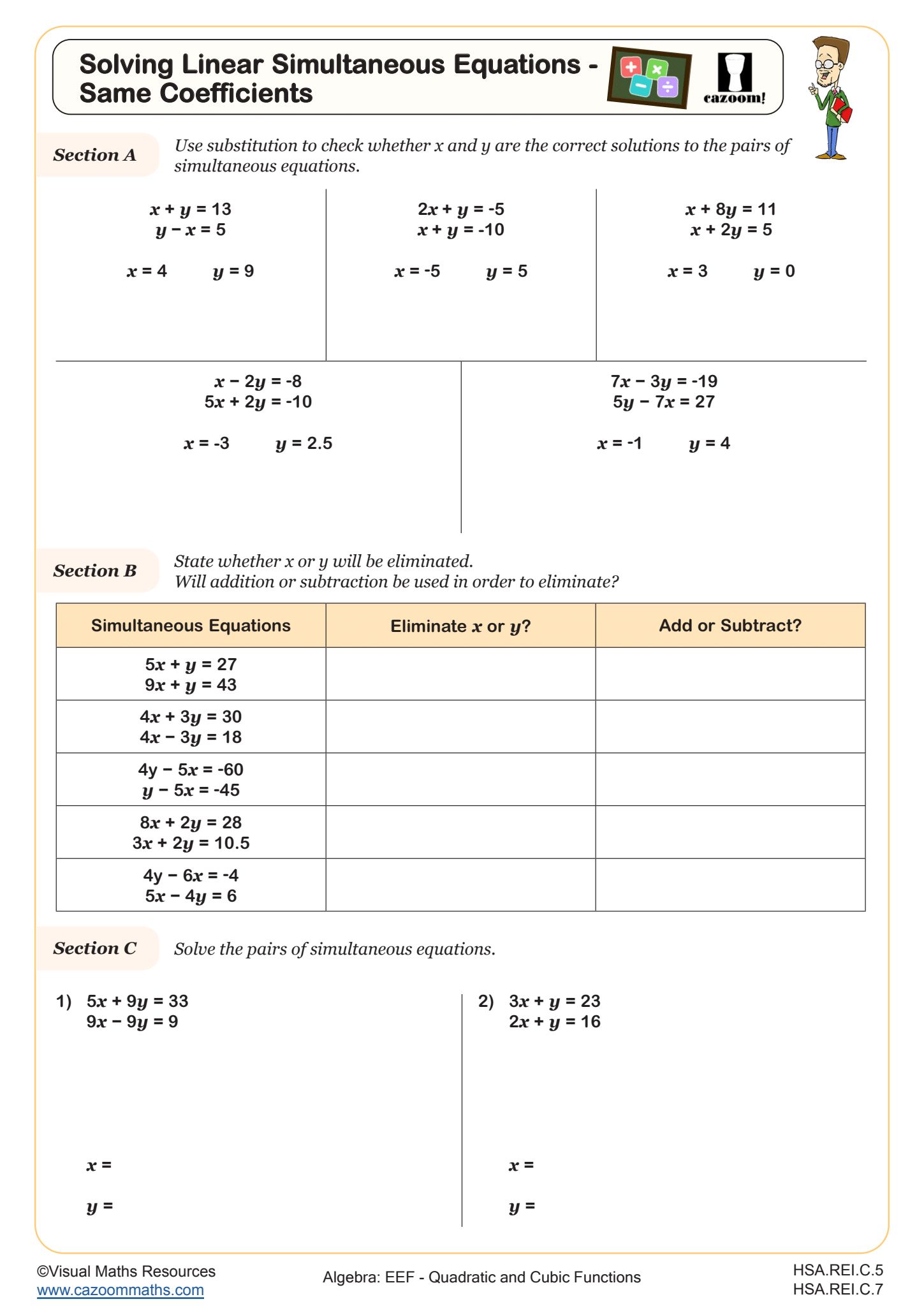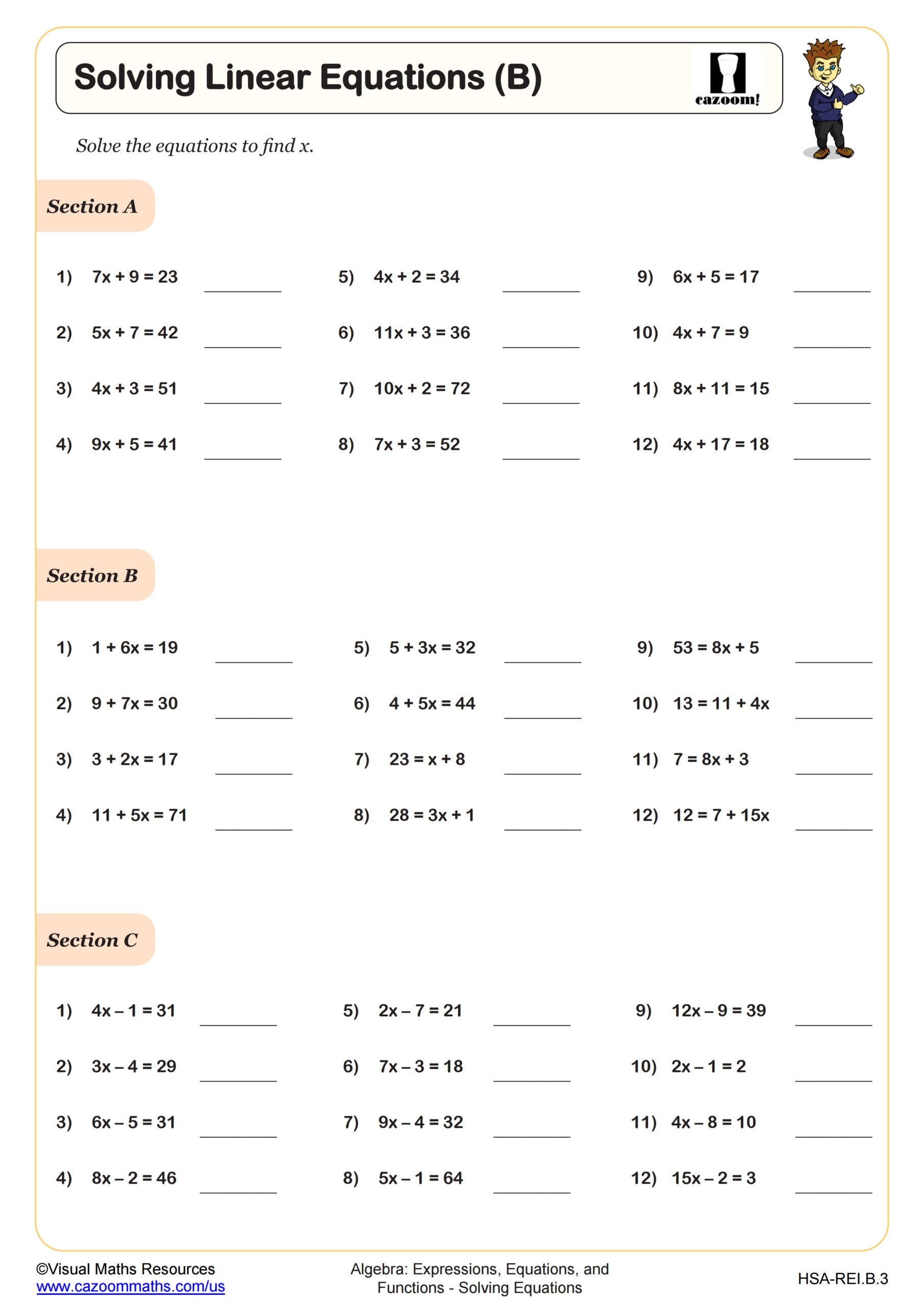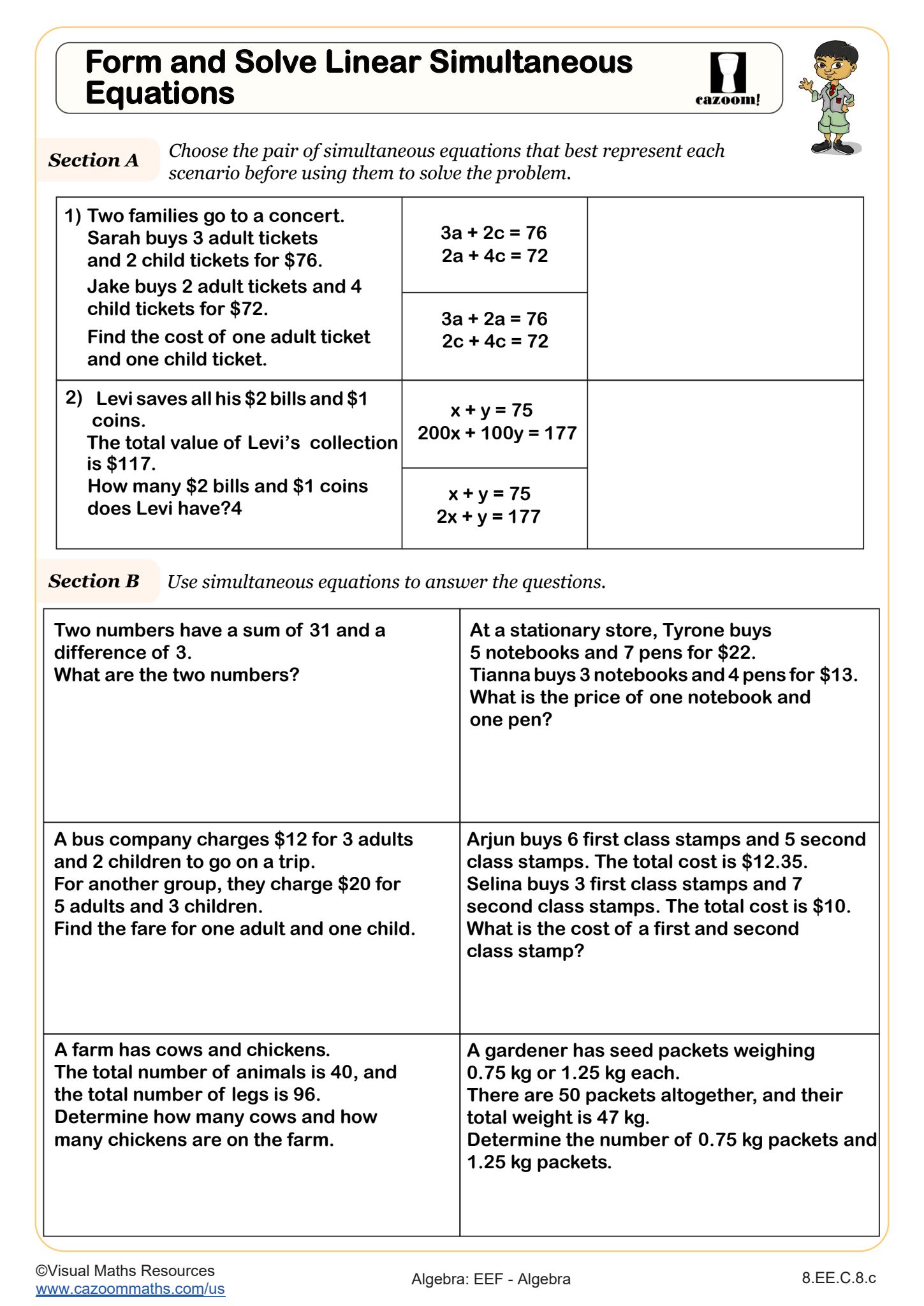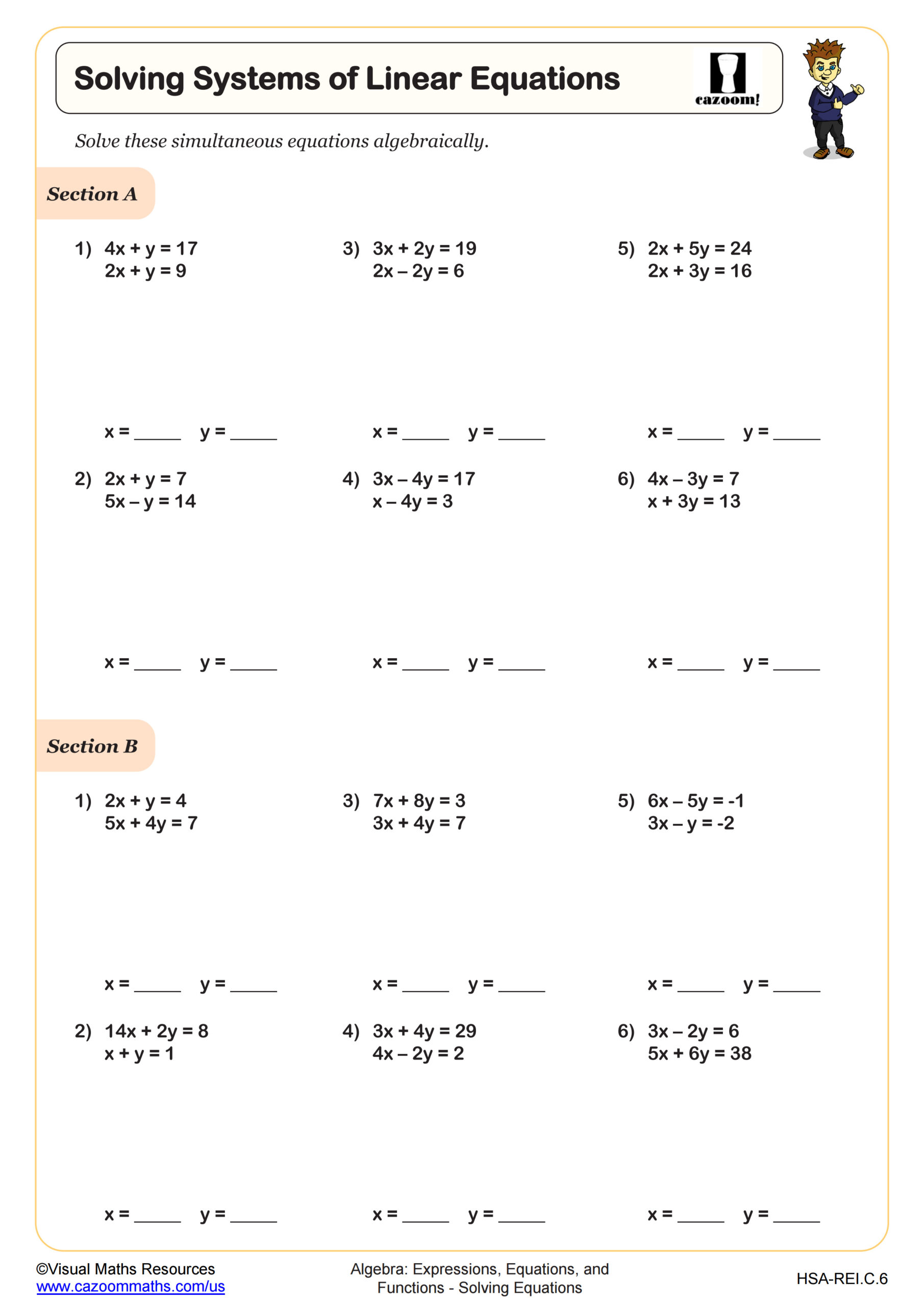Solving Linear Simultaneous Equations - Change One Equation WORKSHEET
Prove that, given a system of two equations in two variables, replacing one equation by the sum of that equation and a multiple of the other produces a system with the same solutions.
Solving Linear Simultaneous Equations - Change One Equation WORKSHEET DESCRIPTION
Perfect for beginning to solve simultaneous equations, this worksheet consists of systems of equations where one coefficient is a multiple of another for at least one variable.
Section A acts as a warm up as students use substitution to check whether given values are the correct solutions to six pairs of equations.
In Section B, learners will decide: which equation to multiply, what it should be multiplied by, which variable should be eliminated and whether addition or subtraction should be used in order to eliminate it in a further six pairs of equations.
Students will solve 8 systems of simultaneous equations in Section C. Solutions are a mix of positive and negative values, and most are integers.
Lastly, Section D asks students to form and solve a pair of simultaneous equations in order to solve a worded problem.
